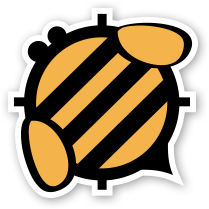# coding=utf-8
from ._advancedparametersbase import AdvancedRadianceParameters
from ._frozen import frozen
# TODO: Didn't add inputs for red,green,blue channels as the chances of that being used
# are almost zero.
[docs]@frozen
class FalsecolorParameters(AdvancedRadianceParameters):
def __init__(self, pic_for_contours=None, contour_bands=None, contour_lines=None,
print_extrema_points=None, scale=None, label=None, contour_quant=None,
legend_width=None, legend_height=None, log=None, multiplier=None,
palette=None):
AdvancedRadianceParameters.__init__(self)
self.add_radiance_path('p', 'picture for contours', check_exists=True,
attribute_name='pic_for_contours')
self.pic_for_contours = pic_for_contours
"""
-p picture
Contour lines can be placed over another Radiance picture using the -p option.
"""
self.add_radiance_bool_flag('cb', 'create contour bands',
attribute_name='contour_bands')
self.contour_bands = contour_bands
"""
-cb
The -cb option produces contour bands instead of lines, where the
thickness of the bands is related to the rate of change in the image.
"""
self.add_radiance_bool_flag('cl', 'create contour lines',
attribute_name='contour_lines')
self.contour_lines = contour_lines
"""
-cl
If contour lines are desired rather than just false color, the -cl
option can be used. These lines can be placed over another Radiance
picture using the -p option.
"""
self.add_radiance_bool_flag(
'e',
'print extrema points',
attribute_name='print_extrema_points')
self.print_extrema_points = print_extrema_points
"""
-e
The -e option causes extrema points to be printed on the brightest and
darkest pixels of the input picture.
"""
self.add_radiance_value('s', 'scaling value', attribute_name='scale')
self.scale = scale
"""
-s scale
A different scale can be given with the -s option. If the argument given
to -s begins with an "a" for "auto," then the maximum is used for scaling
the result. The default multiplier is 179, which converts from radiance
or irradiance to luminance or illuminance, respectively.
"""
self.add_radiance_value('l', 'label for legend', attribute_name='label')
self.label = label
"""
-l label
A legend is produced for the new image with a label given by the -l
option. The default label is "Nits", which is appropriate for standard
Radiance images.
"""
self.add_radiance_number('n', 'number of contours',
attribute_name='contour_quant', num_type=int)
self.contour_quant = contour_quant
"""
-n
The -n option can be used to change the number of contours (and
corresponding legend entries) from the default value of 8.
"""
self.add_radiance_number('lw', 'legend width', attribute_name='legend_width',
num_type=int)
self.legend_width = legend_width
"""
The -lw and -lh options may be used to change the legend dimensions
from the default width and height of 100x200. A value of zero in either
eliminates the legend in the output.
"""
self.add_radiance_number('lh', 'legend height', attribute_name='legend_height',
num_type=int)
self.legend_height = legend_height
"""
The -lw and -lh options may be used to change the legend dimensions
from the default width and height of 100x200. A value of zero in either
eliminates the legend in the output.
"""
self.add_radiance_number('log', 'number of decades for log scale',
attribute_name='log', num_type=int)
self.log = log
"""
-log
For a logarithmic rather than a linear mapping, the -log option can be
used, where decades is the number of decades below the maximum scale
desired.
"""
self.add_radiance_number('m', 'multiplier for scaling',
attribute_name='multiplier')
self.multiplier = multiplier
"""
The default multiplier is 179, which converts from radiance or irradiance
to luminance or illuminance, respectively. A different multiplier can be
given with -m to get daylight factors or whatever.
"""
self.add_radiance_value('pal', 'color palettes', attribute_name='palette',
accepted_inputs=('spec', 'hot', 'pm3d'))
self.palette = palette
"""
The -pal option provides different color palettes for falsecolor. The
current choices are spec for the old spectral mapping, hot for a thermal
scale, and pm3d for a variation of the default mapping, def.
"""
